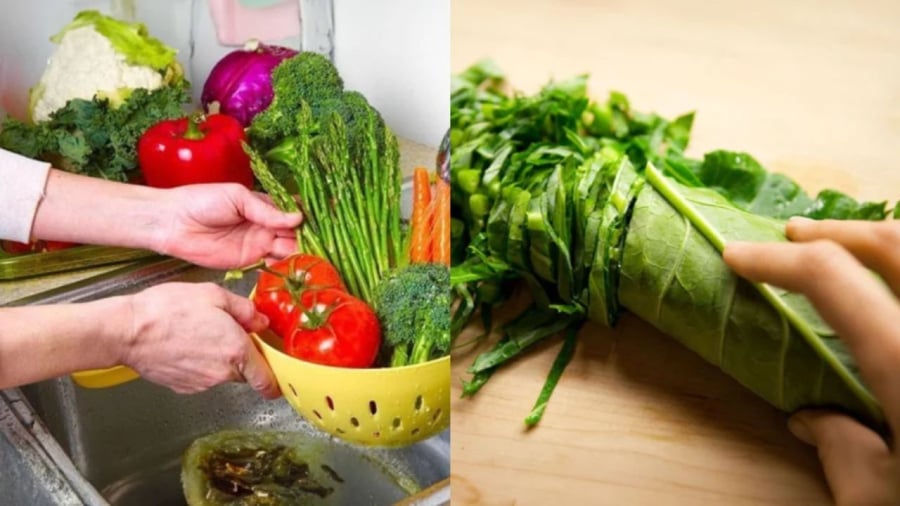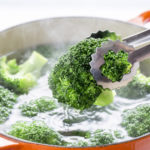Washing vegetables before cooking is essential, and some require chopping beforehand for easier preparation. But what’s the correct order: wash, then chop, or chop first, then wash? It’s a matter of debate.
Chopping vegetables first can make it tricky to thoroughly clean each piece, as they tend to mix and tangle together. On the other hand, chopping after washing may result in slimy, sticky pieces that affect the dish’s flavor. So, which approach is best? Let’s explore further.

Some vegetables are better washed before chopping
Vegetables that are best washed before chopping
Certain vegetables are more effectively cleaned when left whole. Washing whole vegetables helps remove dirt and rinse away parasites that may be present. Once chopped into smaller pieces, it becomes challenging to thoroughly rinse away any remaining dirt or sand, as it tends to get trapped between the pieces.
Additionally, washing whole vegetables under running water is more practical, whereas chopped pieces often require rinsing in a bowl, which can be less efficient. Furthermore, chopping first may lead to a loss of certain vitamins, especially vitamins B and C, as these nutrients are water-soluble and can leach out when exposed to water.
Research indicates that regular washing of vegetables results in a 1% loss of vitamins, but chopping before washing can lead to a 14%-23% loss of nutritional value. Some vegetables, like spinach and corchorus olitorius, tend to become slimier when chopped first and then washed, affecting the taste and texture of the cooked dish.
Therefore, it is recommended to wash the following vegetables before chopping: lettuce, spinach, corchorus olitorius, amaranth, cabbage, and Chinese cabbage, among others.
Complex Vegetables and Roots: Chop First, Then Wash
For vegetables with more complex structures, such as cauliflower, broccoli, and cabbage, it is advisable to separate the florets or leaves, wash them, and then chop them further if needed. Similarly, for roots like cassava, bamboo shoots, potatoes, taro, and green bananas, it is best to cut them into pieces, soak them in water to remove any toxins, and then wash them before cooking.
Eggplants and white eggplants also fall into this category, as chopping and then soaking them can help remove any bitter compounds. For vegetables intended to be consumed raw, such as shredded water spinach or sliced bananas, chopping and then soaking are necessary to prevent discoloration.
Be Mindful When Washing Vegetables
The best way to ensure thorough cleaning is to rinse vegetables under running water, paying close attention to the nooks and crannies of leafy vegetables like lettuce and Chinese cabbage, as dirt and sand can easily get trapped there.
For aquatic vegetables like water spinach, celery, and watercress, there is a higher risk of parasite contamination, so careful rinsing under running water is crucial to avoid any health hazards. After washing vegetables, it is best to cook them promptly, as leaving them wet increases the risk of bacterial contamination, leading to a change in taste and texture.
Avoid soaking vegetables in water for extended periods, as this can cause them to become soggy and more susceptible to bacterial growth. Contrary to popular belief, soaking vegetables in salty water does not effectively kill bacteria and may even accelerate the deterioration of the produce.
If you have vegetables that you won’t be using immediately, try to keep them dry, as moisture can encourage bacterial growth. Additionally, avoid exposing chopped vegetables to direct sunlight, as this can lead to vitamin degradation, particularly vitamin C.

































